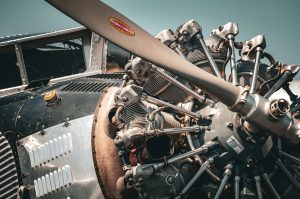Exploring the Thrill and Precision of Formula One Racing Machines
Welcome to the exhilarating world of Formula One racing, where adrenaline-fueled machines take center stage and precision and speed reign supreme. The high-speed thrills and precision engineering behind these racing machines have captured the hearts of millions of fans around the world. Each year, millions of people tune in to watch these supercars take to the track, pushing the limits of physics and technology. In this article, we will explore the thrill and precision of Formula One racing machines, giving you an inside look into what makes these cars true engineering marvels.
The Need for Speed and Precision
Formula One racing is often described as the pinnacle of motorsport, and for good reason. These cars are designed and built with one goal in mind – to be the fastest and most precise racing machines on the planet. With speeds reaching over 360km/h (224mph), Formula One cars are capable of completing a lap of a racetrack in under a minute, making them some of the fastest vehicles on the planet.
But it’s not just about being fast. The precision and accuracy required to handle these speeds are what truly sets Formula One cars apart from any other racing machines. Every single component of these cars is designed and engineered to the tiniest degree, ensuring optimum performance and handling. From the aerodynamics of the bodywork to the gearbox and engine, every element must work in perfect harmony to achieve maximum speed and precision on the track.
The Engineering Marvels that Power Formula One Cars
The Chassis and Aerodynamics
At the heart of every Formula One car is its chassis, the structural framework that holds the car together. The chassis plays a crucial role in defining the car’s performance and handling characteristics, and typically takes months to design and build. Made from lightweight materials such as carbon fiber and titanium, the chassis is designed to be incredibly strong yet lightweight, allowing the car to reach top speeds without sacrificing stability.
The aerodynamics of a Formula One car are equally crucial to its performance. The bodywork of these cars is designed to be as streamlined as possible, reducing drag and increasing downforce. Downforce is the force that pushes the car onto the track, providing better grip and cornering ability. The aerodynamic design of Formula One cars is so precise that at high speeds, these cars can literally drive upside down without losing grip.
The Engine
The engines of Formula One cars are true engineering marvels, capable of producing over 900 horsepower and revving up to 15,000 revolutions per minute. These engines are built with extreme precision, with each component carefully designed and manufactured to withstand the immense forces and heat produced during a race. The engine is also one of the most heavily regulated areas in Formula One, with strict limits on size, weight, and performance to ensure fair competition among teams.
The Electronics and Control Systems
To handle the immense speeds and power of a Formula One car, advanced electronics and control systems are needed. These systems are constantly monitoring and adjusting various components of the car, such as tire pressure, suspension, and engine performance, to ensure optimum performance on the track. The data collected from these systems is then analyzed by the team to fine-tune the car’s setup and improve performance.
The Human Element
While the cars are undoubtedly the stars of Formula One racing, the drivers play a crucial role in achieving success on the track. These drivers are highly trained athletes who must possess incredible focus, agility, and quick reflexes to handle the intense speeds and G-forces experienced during a race. They must also have a deep understanding of the car’s capabilities and constantly make split-second decisions to navigate through the twists and turns of a racetrack.
In Conclusion
Exploring the thrill and precision of Formula One racing machines is an awe-inspiring experience. Whether you are a dedicated fan or a curious observer, witnessing these engineering marvels in action is sure to leave you in awe. From the precision engineering to the human element, every aspect of Formula One racing is a true testament to the pursuit of speed and perfection.









